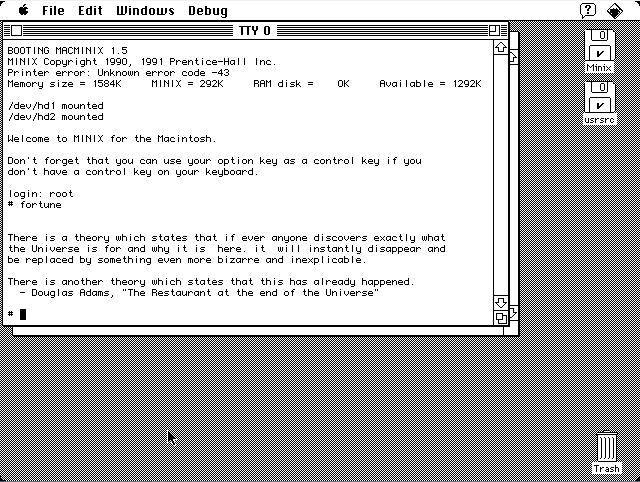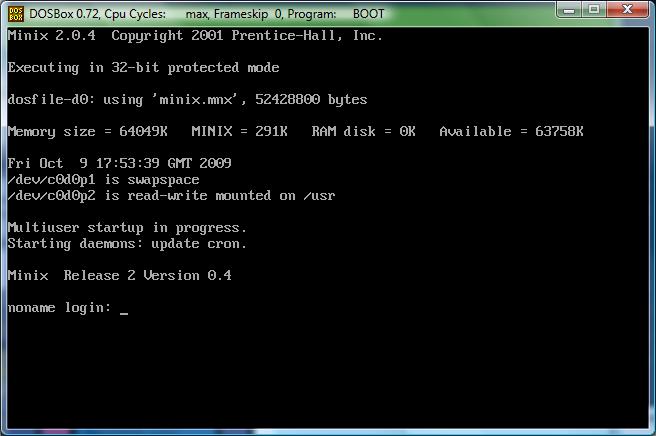(This is a guest post from Antoni Sawicki aka Tenox)
Recently came across this unfinished port of Minix 1.5 to Acorn Archimedes A310. According to the readme file this is a set of patches that needs to be applied on a standard Minix 1.5.10 code base on a Unix machine. The code then needs to be to transferred to Risc OS machine for compilation. Once complete then you need to manually create boot records and a file system. Sounds like a fun little project.
What I want is pretty standard:
- A ready to use working disk image that anyone can unpack and run on a modern machine under an emulator of your choice (commercial OK).
- Aclock binary and screenshot.
First person to deliver these gets a prize of £100 (that is 100 GBP / Pound Sterling). I strongly encourage to coordinate your efforts via comments.
If needed I can supply licenses for commercial Acorn emulators and C compiler for Risc OS, albeit I only have license for a modern ROOL DDE. I hope ancient version is not needed, but this part of the challenge. Note that I can’t just give away the licenses to anyone, I will only share or purchase new licenses for serious contenders on one to one basis.
Let the challenge begin!


